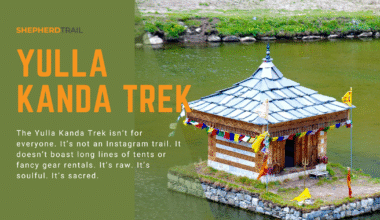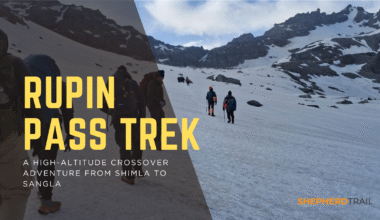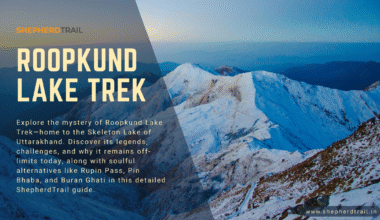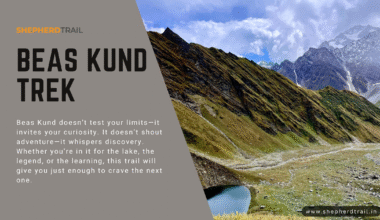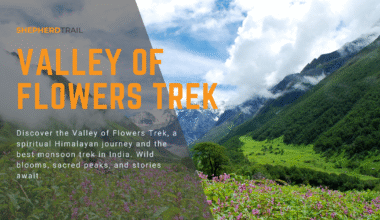❄️ Why the Kedarkantha Trek Deserves a Spot on Your Bucket List
If you’ve ever dreamed of walking through forests dusted with snow, camping beside a frozen lake, or watching the sun rise behind snow-capped Himalayan peaks, the Kedarkantha Trek might just be the winter escape you’re looking for.
I did this trek with a bunch of strangers who quickly became friends, and by the end, I came back with frozen fingers, a full heart, and stories I’ll probably tell for years. Let me walk you through everything you need to know if you’re thinking about heading out on this adventure.
“The view was mesmerizing with a 360-degree view of the Himalayan range. Everything was worth waiting for once the sun came up.” – Mohit Negi
🗺 Quick Overview of the Kedarkantha Trek
-
🕐 Duration: 5 Days / 4 Nights
-
⛰️ Altitude: 12,500 ft (yep, there’s snow!)
-
🎒 Difficulty: Easy to Moderate
-
🚗 Start/End Point: Dehradun → Sankri
-
🗓 Best Time to Go: December to April
-
🌲 Region: Uttarkashi, Uttarakhand
_________________________________________________
📍 How to Reach the Kedarkantha Base Camp (Kotgaon/Sankri Side)
Getting to the base village for the Kedarkantha Trek is an adventure of its own—and part of the charm!
-
Nearest Railway Station: Dehradun Railway Station
-
Nearest Airport: Jolly Grant Airport, Dehradun
From Dehradun, you can take a shared cab or hire a private one to reach Kotgaon or Sankri, depending on your starting point. The drive takes around 8–10 hours and goes through towns like Purola and Mori. The road gets scenic (and a bit winding) after Purola, so starting early is a good idea.
Most trekkers stay overnight in Kotgaon or Sankri before beginning the actual trek the next day.
📶 Mobile Network Info
-
BSNL/MTNL works in Kotgaon and Sankri but is very basic.
-
You might get a flicker of Jio or Airtel in some parts of Sankri, but it’s unreliable.
-
Once you start the trek, there is no network at all—so consider it a digital detox!
Let your folks know you’ll be off the grid for a few days, and enjoy being fully present in the mountains.
🥾 Kedarkantha Trek: Day-by-Day Breakdown
Day 1: Dehradun to Sankri (6,400 ft)
Drive Time: Around 9 hours
This day is mostly about getting there. The drive to Sankri winds through pine forests, riversides, and small mountain towns. It’s long, but the views are a great warm-up for what’s to come.
“The road was full of scenic views — mountains around and the river flowing right next to it.” – Mohit Negi
💤 Where we stayed: A cozy guesthouse with a bonfire and local food. Super chill vibes.

Day 2: Sankri to Juda Ka Talab (9,100 ft)
Trek Distance: 5 km | 4–5 hours
The first trekking day! We hiked through tall pine forests, slipped on patches of ice, and finally reached Juda Ka Talab—a frozen lake surrounded by snow. It honestly looked like something out of Narnia.
“Keep your bag as light as possible. The first day is a bit difficult if you’re new to trekking.” – Mohit Negi
“Learning to pack a backpack properly and handle trek poles was a skill I didn’t know I needed!” – Vaani Dagur
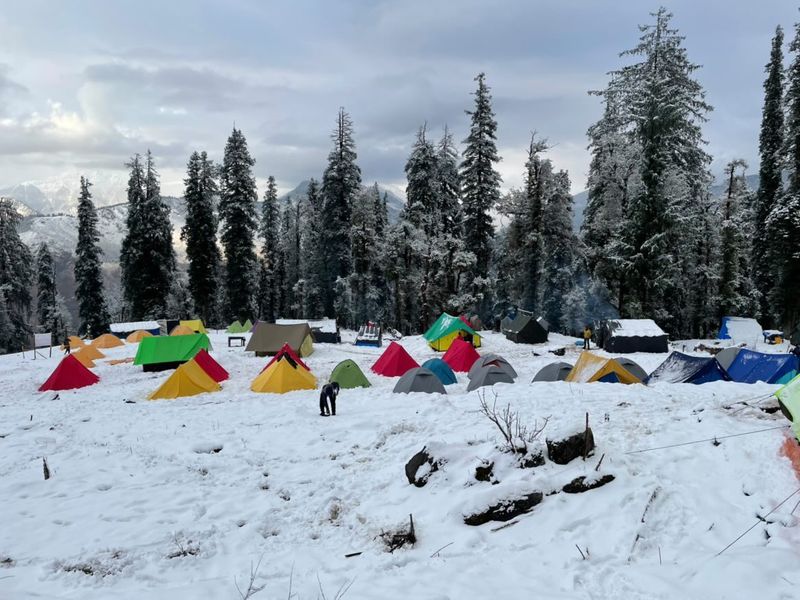
🛶 Highlight: Hot chai by the frozen lake = bliss.
Day 3: Juda Ka Talab to Kedarkantha Base Camp (11,200 ft)
Trek Distance: 4 km | 2–3 hours
Shorter distance, but the altitude starts to hit here. Snow gets thicker, and you can see the Kedarkantha peak in the distance—your goal for the next day. Everyone was hyped and slightly nervous.
“We enjoyed pahadi Maggi with views of the Kedarkantha peak. Evenings were spent dancing and laughing with new friends.” – Mohit Negi

🧣 Tip: Layer up—it gets cold fast after sunset.
Day 4: Summit Day! Kedarkantha Peak (12,500 ft) and down to Hargaon
Total Trek: Around 12 km | 9–10 hours
This is the big one! We started trekking at 3 AM under the stars. The summit push is steep and snowy, but once you reach the top… oh man. The 360-degree Himalayan view is nothing short of magical.
“One word – PRICELESS.” – Vaani Dagur
“The golden view of the snow cannot be explained in words.” – Kumar Harsh
“The most scenic sunrise and the windy Himalayas left me speechless.” – Sachin Dalvi

🎉 Fun bit: We slid down snow slopes on the way back. Like actual snow slides.
Day 5: Hargaon to Sankri and Drive Back to Dehradun
Trek: 6 km | Then 8–9 hour drive
The final walk down feels bittersweet. You’re tired, probably sore, but also proud and kind of in awe of everything you just did.
“It was sad to part ways but we left with countless memories, new friendships, and a certificate to remind us of our accomplishment.” – Mohit Negi
📷 Pro Tip: Don’t pack away your camera too soon—morning light on the forests is gorgeous.
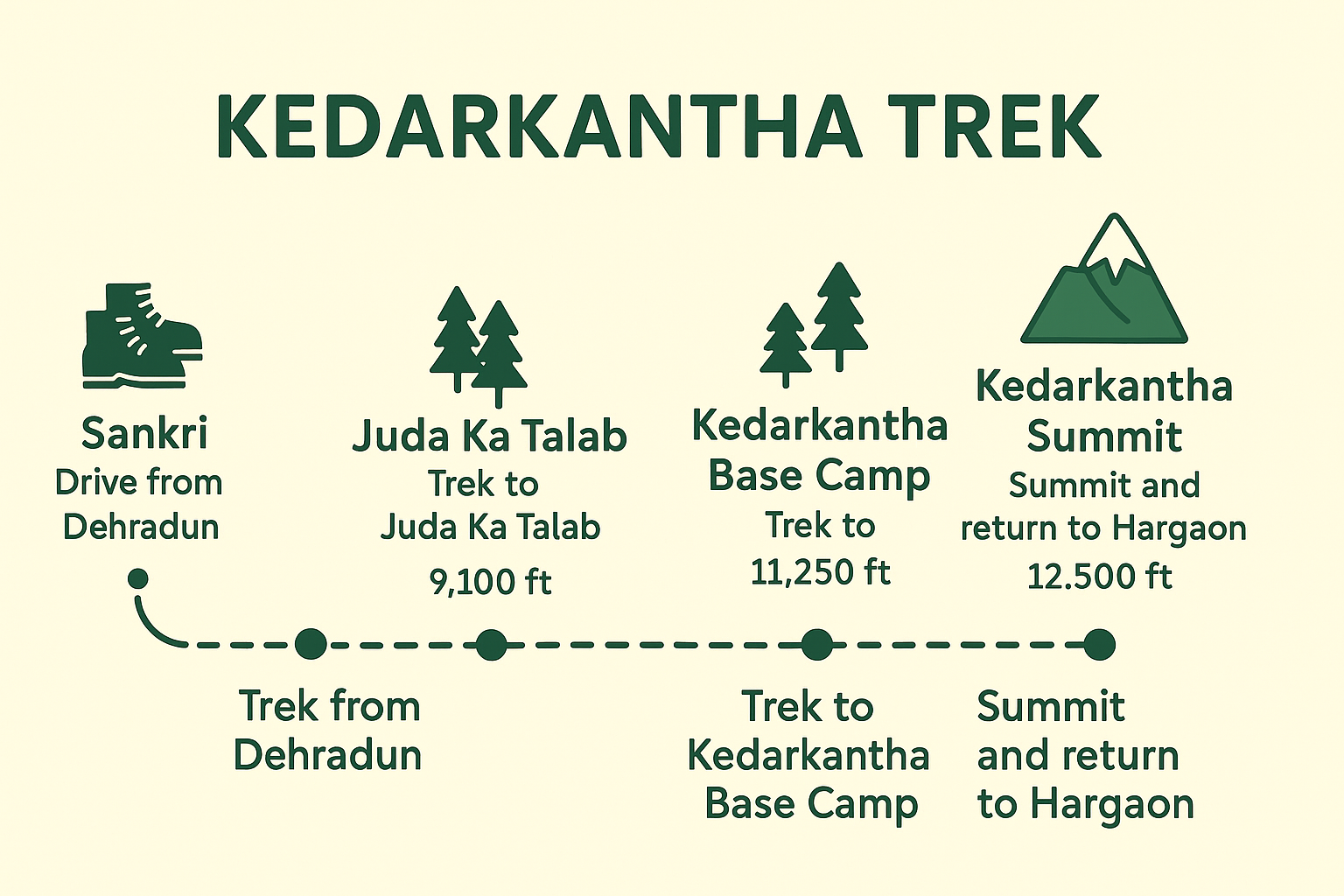
🎒 What to Pack for the Kedarkantha Trek (Don’t Skip This)
Here’s what I wish someone had reminded me before I overpacked and still forgot essentials:
Winter Layering:
-
Base layers (thermal)
-
Fleece + down jacket
-
Waterproof shell
Trek Gear:
-
Trekking shoes with good grip
- Hiking Pole
-
Gaiters & microspikes (if snowing)
-
Headlamp (a must!)
Accessories:
-
Gloves (waterproof + fleece)
-
Woolen cap & neck warmer
-
Sunglasses (snow glare is real!)
Extras:
-
Power bank
-
Reusable water bottle
-
Snacks, ORS
🎒 Don’t overpack, but don’t underprepare either—mountains are unpredictable.
“Have a good pair of waterproof trekking shoes. Snow enters from every corner otherwise!” – Kumar Harsh
💡 Local Culture & Tips
Greet locals with a warm “Namaste”
Respect village boundaries and customs
Don’t litter – carry your trash
Always ask before taking photos of people
✨ Trekking is more than a physical journey—it’s a cultural exchange too!
🗓️ Best Time to Visit
Winter (Dec–March): Ideal for snow, icy forests, and a true white-wonderland experience
Spring (April–early May): Great if you want to avoid heavy snow but still enjoy chilly mornings and forest charm
Avoid monsoons – Landslides and trail washouts are common
💰 Trek Fee (if self-guided or with groups)
Estimated range: ₹9,000–₹12,000 (all-inclusive with food, guide, permits, stays). Costs may vary depending on trek operator or if you DIY with homestays and local guides.
🌟 Why Kedarkantha Trek is Totally Worth It
There’s something about the Kedarkantha Trek that lingers long after you’ve packed up your boots and come back down to regular life. It’s not just about the summit—it’s the entire experience that makes this trek a true winter wonder.
Here’s what really makes it stand out:
🚗 The Journey to the Base Camp Is a Visual Treat
Even before the trek begins, the drive itself sets the tone. As you pass through Purola, the road cuts through dense pine forests that feel straight out of a postcard. Then comes the stretch along the Mori valley, with the River Tons flowing beside you—easily one of the most scenic drives I’ve been on. It’s one of those routes you find yourself thinking about long after the trek is over.
🏡 A Taste of Life in Kotgaon
If you get to spend a night in Kotgaon, consider yourself lucky. The village has this quiet charm that’s hard to explain. The wooden houses with their Koti Banal architecture, the traditional attire of the locals, and their simple, rhythmic way of life—it’s like stepping into a completely different world. Getting to experience this slice of mountain culture really adds a layer of meaning to the trek.
🌲 Wild and Untouched Forest Trails
The forests on the way from Kotgaon to Kedarkantha summit are hands down some of the most beautiful I’ve walked through. You get these dense, shadowy woods where sunlight filters in through a thick canopy, roots curl across your path, and everything feels alive. It’s quiet, surreal, and sometimes, even a little mystical. These forests don’t just take you to the summit—they become part of the story.
🏕️ Dreamy Clearings and Campsites
One thing I loved about the Kedarkantha trail was how well-timed the clearings are. After a long stretch through the forest, suddenly you’ll hit an open space with jaw-dropping views—perfect for a break or to pitch your tent. Places like Bhoja Dhadi look especially magical at sunset, with orange skies and snow-lit peaks all around. These spots make the journey feel naturally paced and visually rewarding.
🧭 Multiple Trail Options
Unlike some treks with a fixed route, Kedarkantha offers several ways to reach the summit. That flexibility means you can take quieter paths if the main trail feels crowded, or choose a route that matches the weather and your group’s energy. It keeps the adventure fresh and gives you a sense of freedom.
🏔️ The Final Summit Push
The best part? That last climb to the Kedarkantha summit. The peak is visible from base camp, which builds up this sense of anticipation. The climb itself is steep, especially in snow, and it pushes you physically—but that just makes the summit feel more rewarding. Once you’re up there, surrounded by panoramic Himalayan views, the effort melts away. It’s one of those “I did it!” moments that stick with you forever.
✨ In Short…
Whether you’re in it for the thrill of climbing a snow-covered peak, the peaceful forest walks, or just want to dip your toes into Himalayan trekking as a beginner—Kedarkantha ticks all the boxes. It’s got a bit of everything: adventure, beauty, culture, and that indescribable mountain magic.
✨ Final Thoughts
The Kedarkantha Trek isn’t just about reaching the summit—it’s about the little moments. The laughs around the fire, the sound of snow crunching under your boots, that first glimpse of golden peaks at sunrise. Whether you’re going solo or with friends, it’s the kind of trip that sticks with you.
🚨 Final Tips
✅ Inform family before going offline
✅ Acclimatize properly—don’t rush to summit
✅ Watch out for signs of AMS even on lower altitude treks
✅ Always listen to your guide or locals on the trail
If you’ve been on the trek or are planning it, I’d love to hear your thoughts or questions in the comments!
📌 P.S. Save This Post for Later!
If you found this guide helpful, share it with your trek group or save it to your travel board. And if you’re looking for more treks like this, I’ve got detailed write-ups on [Other Winter Treks] too!


